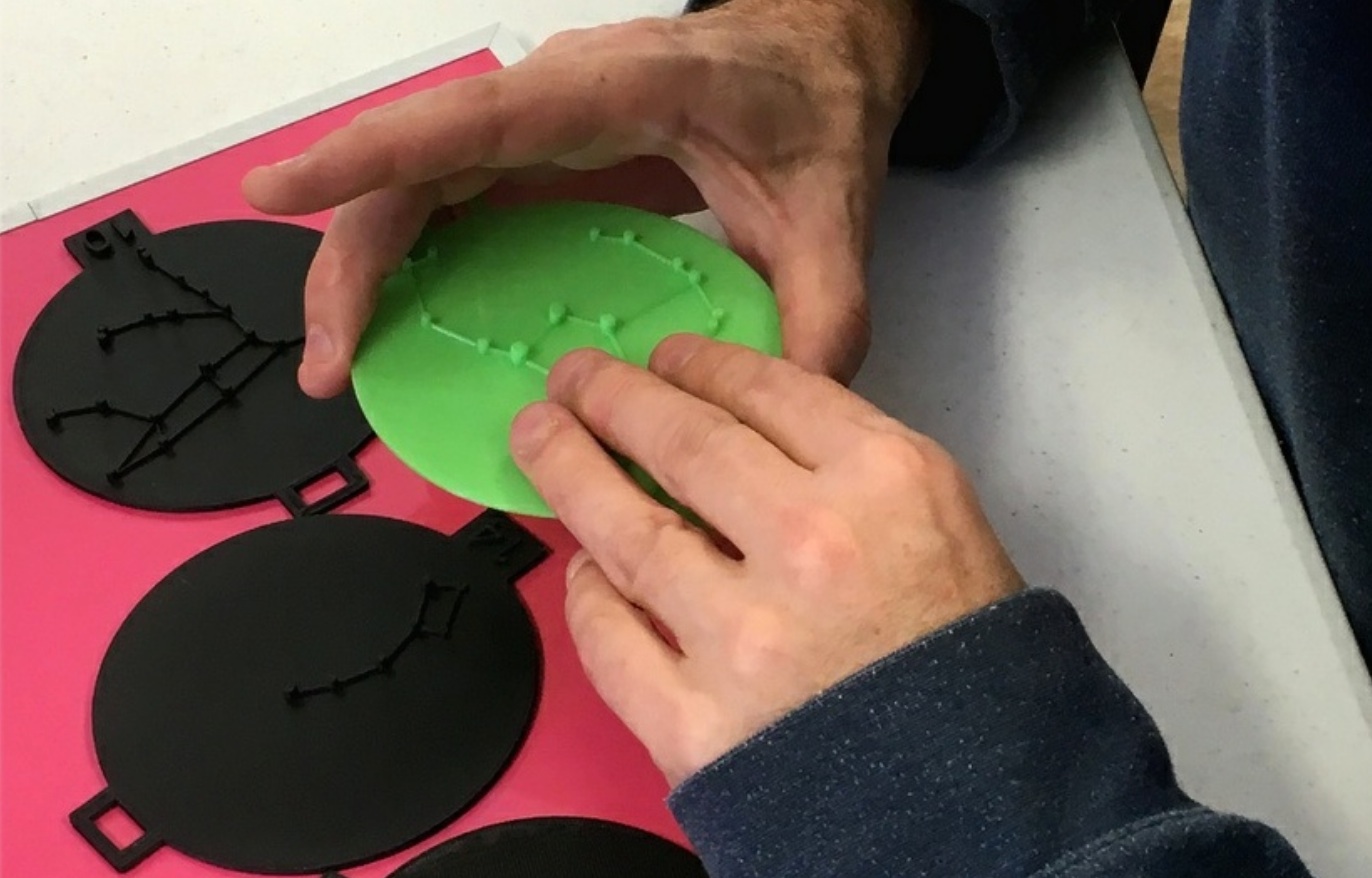Star Coin Project: Making Astronomy Accessible

Astronomy is one of the more challenging topics to make accessible to students who are blind or visually impaired. The Star Coin project makes available 3D printable constellations that can be used to teach Astronomy.
Project Background
The project started in October 2014 as an astronomy education approach for people with visual impairments. Creator Bruce Bream learned how to design and print two 3D objects over several months using FreeCAD and the MakerBot 3D printers at the Case Western Reserve University. He was also working as a volunteer in the astronomy department at the Cleveland Museum of Natural History (CMNH) at the time. The planetarium director, Jason Davis, mentioned their collaboration with the Cleveland Sight Center teaching astronomy. Putting this together with his recent 3D printing interest, it seemed like a great opportunity to print constellations in tactile form.
Design and Use
 Black 3D filament material with white painted stars gives the best contrast for those with limited vision. White model airplane enamel paint had worked well to paint the stars and number. PLA filament was used in the constellations shown here. They found that attaching thin magnetic sheeting to the back of each disk (deflect-o Magnetic Vent Cover) allows the disks to be stuck to ferrous boards. A lot of white boards have metal backing for attaching magnetic items. They found that supplying each student with a small metal board about 2x2 ft (from the office supply section of a discount store) let them easily move the constellations. The relative orientation of the constellations to each other can thus be taught while placing them on the board. Comical stories about the proximity of constellations and stories of the mythical characters can make this fun for the students.
Black 3D filament material with white painted stars gives the best contrast for those with limited vision. White model airplane enamel paint had worked well to paint the stars and number. PLA filament was used in the constellations shown here. They found that attaching thin magnetic sheeting to the back of each disk (deflect-o Magnetic Vent Cover) allows the disks to be stuck to ferrous boards. A lot of white boards have metal backing for attaching magnetic items. They found that supplying each student with a small metal board about 2x2 ft (from the office supply section of a discount store) let them easily move the constellations. The relative orientation of the constellations to each other can thus be taught while placing them on the board. Comical stories about the proximity of constellations and stories of the mythical characters can make this fun for the students.
